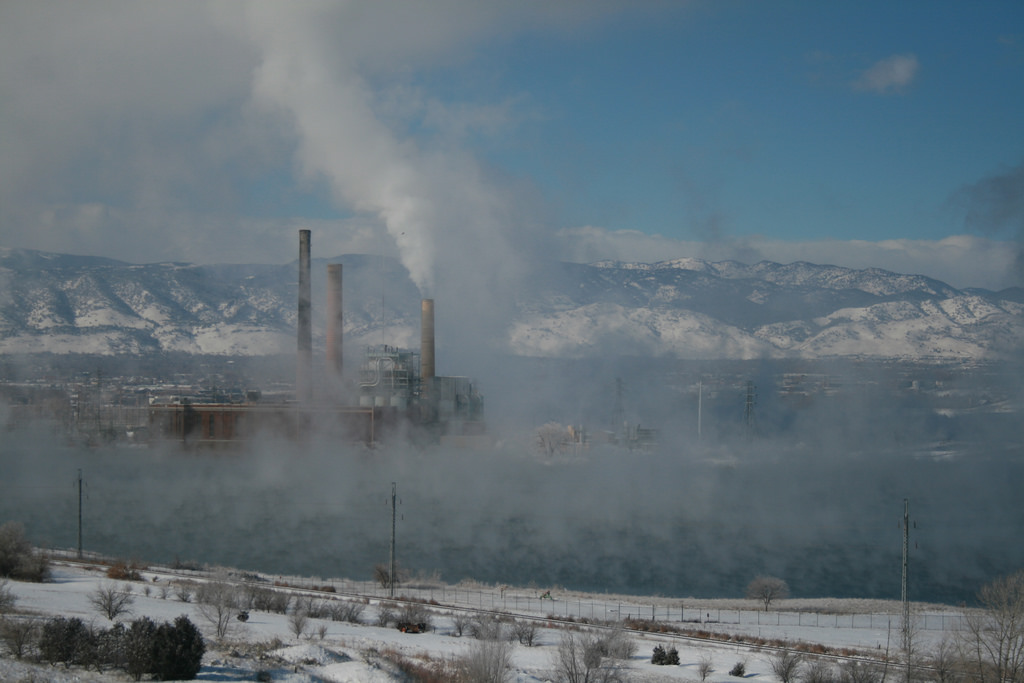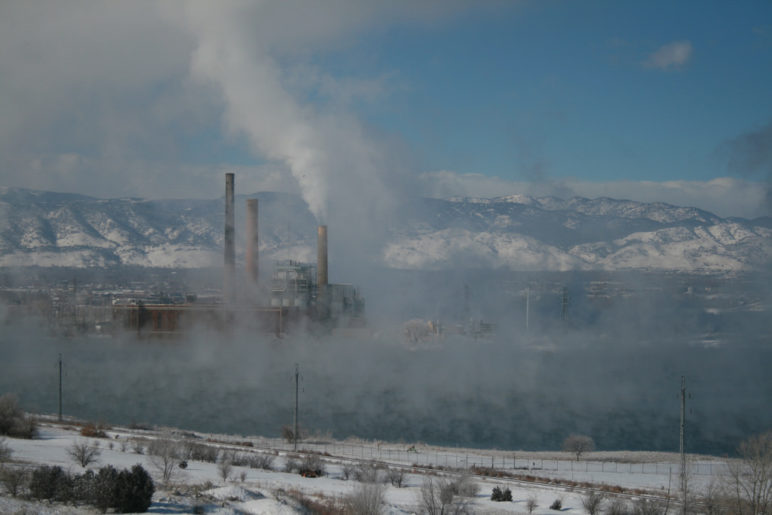The Northwest is not exactly the heart of coal country. Over almost a decade of bruising disputes about whether to build export terminals, communities in Oregon and Washington roundly rejected every single proposal the industry brought forward. Clearly, the region sees coal as a dead end, most especially when it means mile-long trains bearing low-grade coal that would be shipped to power plants in Asia.
So when the long-shuttered John Henry No. 1 coal mine, located just a few miles from Seattle, filed papers in 2011 to reopen, it was no surprise that the move ignited ferocious objections from activists and leaders.
There’s no disputing that coal is an environmental menace but the proposal is also an opportunity to understand how coal figures into the Northwest’s modern economy.
“I am going to do everything I can legally and politically to prevent us from having to suffer the impacts from coal mining in King County,” vowed county executive Dow Constantine.
Yet the mine, if it ever does reopen, is not in the same league with the gargantuan proposals to export low-grade coal. The alleged merits of the project are certainly worth debating, and there’s no disputing that coal is an environmental menace but the proposal is also an opportunity to understand how coal figures into the Northwest’s modern economy.
Industrial manufacturing still requires small amounts of coal to produce things we need. Take cement for example: it’s the key to building cities, light rail lines, and roads, yet one metric ton of cement requires, on average, 140 kilograms of coal. That’s part of the reason why cement manufacturing is, at present, an unavoidably carbon-intensive process.
John Henry No. 1 coal would be earmarked mostly for export to a Canadian cement plant, where it would be used to fire kilns and serve as a feedstock. The remainder would be slated for a cement plant in Seattle, as well as to two unnamed facilities, “one lime kiln and one pulp mill,” in the region. Like cement, the nature of lime kilns and pulp mills, are similarly carbon-intensive and fossil fuel-reliant.
To better understand coal’s niche in the industrial economy, it’s worth taking a closer look at these plants.
Lehigh Cement Plant (Delta, British Columbia)
According to the mine’s Environmental Assessment, the company anticipates selling about 60 percent of its coal to the Lehigh Cement Plant in Delta, British Columbia. It is the largest cement facility in the Pacific Northwest with production of around 1.1 million metric tons annually, using probably 170,000 tons of coal. Lehigh, located on Tilbury Island near the mouth of the Fraser River, sources the raw materials for cement production from local extraction sites. For example, the Lafarge quarry on Texada Island, northwest of Vancouver, ships limestone in barges to the Lehigh plant. Texada Island is also a transfer terminal for coal mined at the Quinsam mine on Vancouver Island, which supplies coal to cement plants in the region.
Ash Grove Cement Plant (Seattle, Washington)
The John Henry mine would also supply coal to Ash Grove Cement Plant, located just south of the West Seattle Bridge, which produces around 750,000 tons of cement clinker annually. Like the Lehigh plant in British Columbia, Ash Grove sources most of its raw materials from Texada Island. (Ash Grove even owned its own limestone quarry on the island until 2010.) Ash Grove’s coal use fluctuates substantially, from over 90,000 to just 9,700 tons a year, a range partially explained by the plant’s willingness to experiment with a variety of fuel sources, including oil, natural gas, and even used tires.
Graymont lime kiln (Tacoma, Washington)
The Graymont plant in Tacoma’s Tideflats, appears to be the only existing lime kiln in the Puget Sound area. Like Lehigh and Ash Grove, barge shipments of limestone from Texada Island come to the Graymont facility for use in its coal-fired kiln. Graymont produces quicklime, often used in steelmaking, and hydrated lime, often used in sewage treatment. It’s unclear how much coal the facility burns annually, but assuming a production ratio similar to cement (and operating at full capacity), the 280 ton-per-day kiln likely consumes around 14,300 tons of coal each year.
Paper mills
It is not clear which paper mill in the region is the prospective customer for the John Henry mine, though it is not uncommon for these plants to burn coal. For example, WestRock, a packaging manufacturer and the owner of a big plant in Tacoma, uses coal at some of its North American operations. Paper mill operators generally prefer to use natural gas for energy, but the firms tend to select whichever fuel source is cheaper. [Ed. note: An earlier version of this article incorrectly implied that the WestRock mill in Tacoma and another one in Port Townsend use coal.]
Quinsam coal mine (Vancouver Island, British Columbia)
With or without the John Henry mine, the Northwest’s industrial users will likely continue to use coal. Both Lehigh and Ash Grove Cement plants primarily use coal from Vancouver Island’s Quinsam mine, though they are exploring alternative feedstocks. Quinsam has historically produced about 500,000 metric tons of coal annually. Low prices forced it to shut down in 2016, only to reopen a little over a year later under new owners, ERP Compliant Fuels, a company that bills itself as specializing in “rehabilitating blighted mine sites and planting trees to offset carbon emissions.”
Fortunately, coal is no longer needed to generate electricity. That can be done often more cheaply—and always more cleanly—by using renewable energy. The sole coal-burning power plant in Washington, the Trans-Alta facility in Centralia, is scheduled to close by 2025, per state law. That plant is responsible for the vast majority of the coal use in Washington—on an annual basis, at least 40 times as much as the John Henry mine would produce. Just so, the biggest coal export terminals proposed in Washington, the Gateway Pacific project near Bellingham and the Millennium Bulk project at Longview, would have each shipped nearly 600 times as much.
Whether it makes sense to reopen the John Henry Mine depends on a range of factors, including negative impacts on local communities—like heavy truck traffic, noise, and pollution. And no matter how it is used, coal is a rotten deal for the environment: it is dirty, polluting, and harmful to the climate. Yet it is also a necessary ingredient for cement and a few other industrial purposes, enterprises that remain important to the Northwest’s economy.
The question John Henry No. 1 poses is ultimately a question of tradeoffs.
Ahren Stroming is a research contributor to Sightline. He’s a former policy analyst for the City of Seattle Office of Sustainability and Environment and a current graduate student at the University of Freiburg in Germany.











Alyssa Barton
All in all, the John Henry Mine is a bad deal for Black Diamond and Washington State.
Puget Soundkeeper became concerned about the mine during the NEPA review process in 2017 when we discovered water quality issues at the mine. Over the summer and fall of 2018, Soundkeeper reviewed e-files received in response to a Public Document Request to the Department of Ecology on the mine. Volunteers looked through records including paper files. We also took a look at PARIS (the Department of Ecology’s online permitting database) records for the mine.
PARIS indicates that the mine had 871 NPDES Clean Water Act violations as of our last search in October, of which 372 appear to be effluent violations – discharges of pollutants in violation of the Clean Water Act. We also found a disturbing record of other violations and potential violations at the site in the federal Office of Surface Mining and Reclamation’s files. The history of violations are noted or described in inspection reports and include the improper import and disposal of waste on site: waste such as fill from sand and gravel mining operations, potentially toxic materials from Ash Grove Cement, tires and scrap metal, 55 gallon drums of liquid, and more. Further, it’s unclear how much reclamation has been done to date, and whether any reclamation performed was done properly.
Ecology should find out what’s being stored or disposed of on site to ensure that it is safely handled. We are concerned that what happened at the Landsberg Mine could happen here. Palmer Coking Coal Company, a company owned and operated by the same players, stopped mining and used the Landsberg site as an industrial waste dump site. They’re doing a cleanup now with Ecology and DOH oversight. http://www.kentreporter.com/news/state-to-clean-up-landsburg-mine-waste-site-near-kents-water-source/ .
In your article, you state that “Whether it makes sense to reopen the John Henry Mine depends on a range of factors, including negative impacts on local communities—like heavy truck traffic, noise, and pollution.” We agree. In light of the violations records, pollution documented, and risks posed to the community we’ve concluded that it doesn’t make sense.
The public can provide comments to Ecology or sign up for updates when the Draft Permit issues. https://ecology.wa.gov/Regulations-Permits/Permits-certifications/PCCC.
Ron luzasky
We need coal very much today as it gives lead way when gas,oil,and electricity try to hold us hostage
Chris Wilke
I think the actual term is leeway. It might actually give us lead way though, if we consider the toxic pollution impacts of burning this antiquated and harmful energy source.
The fact of the matter is we do not need coal for our energy uses in Washington.
Hutch
In addition to the potential impacts to air and water in Black Diamond mentioned above, there’s a real question of whether there is even a real need for an active coal mine in King County. A significant amount of Powder River Basin coal still runs through BNSF rail lines in the Pacific Northwest, impacting air and water quality throughout the region (as you’ve covered before: https://www.sightline.org/2016/05/04/coal-trains-mean-coal-dust-period/). The first unit of the Centralia plant closes in 2020, halving the coal demand from that facility, and the whole plant will be retired in 2025; there’s plenty of PRB coal available to supply niche industrial customers without threatening the air and water of Eastern King County.
Kevin Scott
A quick correction. Port Townsend Paper Corporation does not burn coal at all. I can not reliably state that the facility never burned coal, but I know absolutely that the facility has not burned coal for at least the last 25 years.
Eric de Place
Thanks, Kevin. We’ve updated the piece.
Jake J
When you write, “There’s no disputing that coal is an environmental menace,” and say that renewable energy is cheaper than coal, you show that you are propagandists and nothing more. But then you knew that.
Kelsey Hamlin
Jake, the trouble with that is, being a “propogandist” requires spreading lies. Neither statement (that coal is an environmental menace, AKA bad for the environment, or that renewable energy is cheaper than coal) is false. We research everything we publish and take it very seriously. If you feel these statements are in fact false, please, feel free to find the citations or studies proving such. It’s okay, we’ll wait.